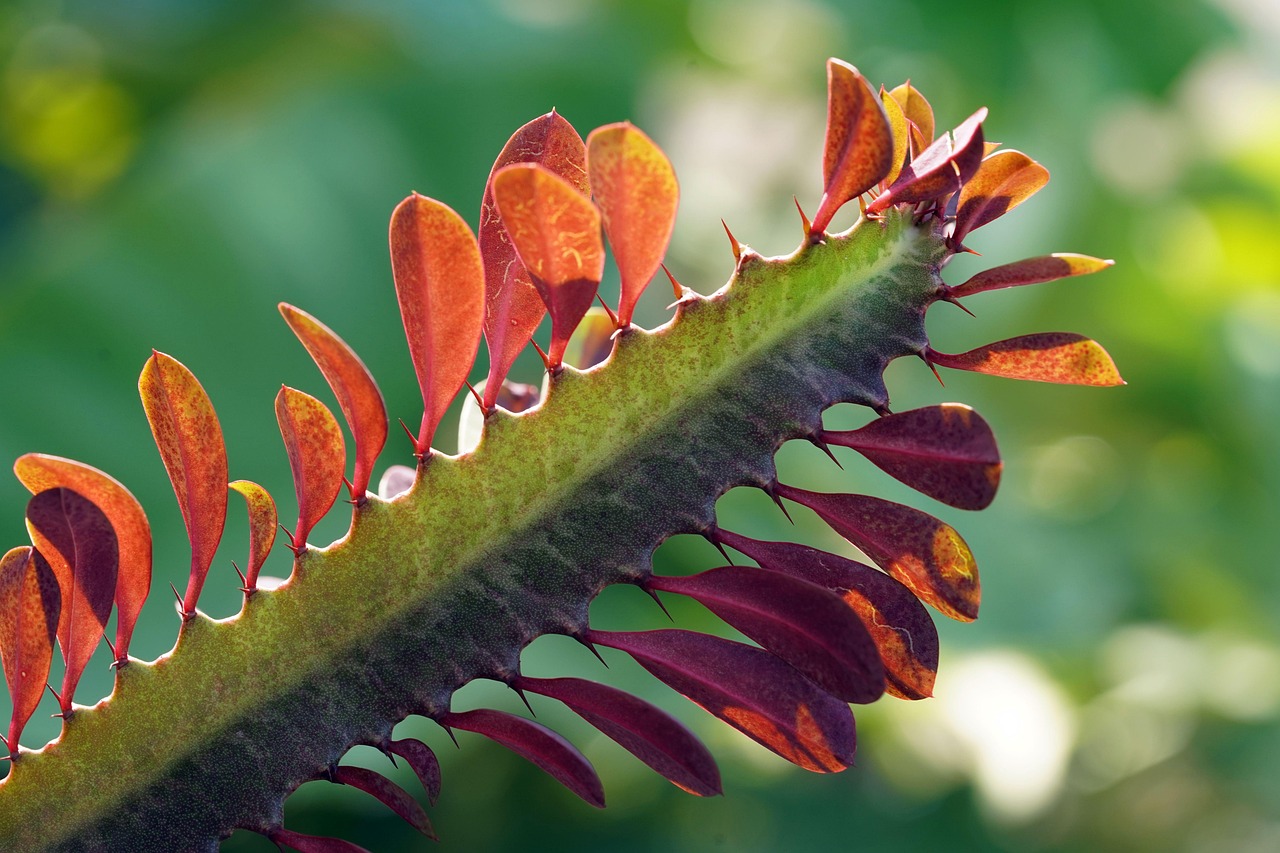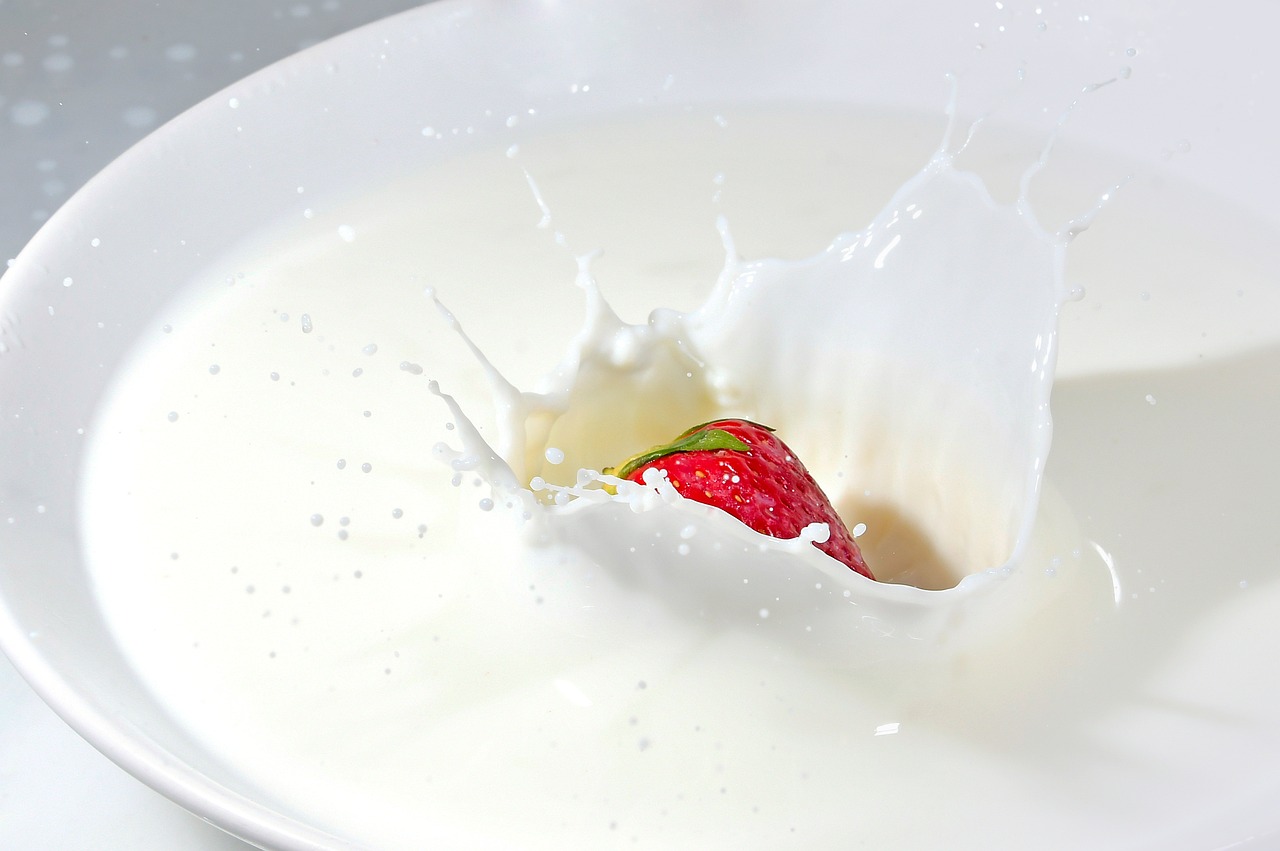Pruning the African Milk Tree is essential for maintaining its health and shape. Regular pruning encourages bushier growth, removes dead or damaged branches, and helps manage its size, making it suitable for indoor environments.
The African Milk Tree, also known as Euphorbia trigona, is a popular houseplant appreciated for its unique appearance and low maintenance requirements. This succulent is native to Africa and can grow tall with a distinctive upright structure. Its thick, green stems have spiky edges that give it a striking look, making it an attractive addition to any indoor space.

To ensure your African Milk Tree thrives indoors, proper care is crucial. One of the most important aspects of care is pruning. Pruning helps control growth and encourages a healthier plant by promoting new growth and eliminating any unhealthy or unsightly parts. It is particularly beneficial in indoor settings where space may be limited.
Understanding the Growth of African Milk Trees
Before diving into pruning techniques, it’s vital to understand how the African Milk Tree grows. The plant can reach heights of up to 6 feet when fully matured. However, in indoor conditions, it may not grow as tall due to limited light and space. Understanding its growth pattern can help you decide when and how much to prune.
Here are some key points about the growth habits of the African Milk Tree:

- It typically grows upright with thick, vertical stems.
- New shoots emerge from the top and sides of the stems.
- Leaves are usually sparse, primarily found at the tips of the stems.
- The plant can produce yellow flowers, though this is rare indoors.
When to Prune Your African Milk Tree
Timing is an important factor when it comes to pruning your African Milk Tree. The best time to prune is during the spring or early summer when the plant is actively growing. Pruning during this period allows the plant to recover quickly and encourages robust new growth.
Here are some signs that indicate it might be time to prune your plant:
- The plant has become leggy or unbalanced.
- There are dead or damaged branches.
- The plant is overcrowded and needs thinning.
- You want to encourage new growth for a bushier appearance.
Tools Needed for Pruning
Using the right tools is essential for effective pruning. Here’s a list of tools you should have on hand:

- Sharp pruning shears: These ensure clean cuts that help prevent damage to the plant.
- Gloves: Given that the sap can be irritating to some people, wearing gloves is advisable.
- Disinfectant: Clean your tools with rubbing alcohol before and after use to prevent disease transmission.
How to Prune Your African Milk Tree
The pruning process should be methodical to achieve the best results. Here’s a step-by-step guide:
- Assess the Plant: Look over your African Milk Tree to identify which branches need trimming. Focus on removing any dead or unhealthy parts first.
- Make Your Cuts: Use sharp pruning shears to cut back branches. Aim for a clean cut at a node or just above where a leaf emerges.
- Remove Lower Leaves: If the lower leaves are turning yellow or brown, trim them off to promote better air circulation.
- Shape the Plant: To encourage a fuller appearance, trim back the top growth slightly. This stimulates side branching.
- Clean Up: Dispose of any cuttings properly and ensure no debris remains around the base of the plant.
Post-Pruning Care
After pruning, provide your African Milk Tree with optimal care to support recovery. Ensure it receives adequate sunlight and water without overwatering. Monitor for any signs of stress, such as wilting or discoloration. With proper care post-pruning, your plant will thrive and continue to grow beautifully indoors.
Remember, pruning is not just about cutting; it’s about understanding your plant’s needs and fostering healthy growth patterns. Each cut you make should support the overall health and aesthetics of your African Milk Tree.

Common Issues and Solutions for African Milk Trees
While caring for your African Milk Tree, you may encounter various issues that can affect its health and growth. Understanding these problems and their solutions is essential for maintaining a thriving plant. Below are some common challenges faced by indoor gardeners and practical solutions to address them.
Pests
Pests can be a significant concern for your African Milk Tree, especially in indoor environments where conditions can be favorable for infestations. Here are some common pests to watch out for:
- Spider Mites: These tiny pests can cause yellowing leaves and webbing on the plant.
- Mealybugs: They appear as white cotton-like clusters on the stems and leaves.
- Scale Insects: These pests look like small brown bumps on the stems and leaves.
To manage pests effectively, consider the following solutions:
- Regular Inspection: Check your plant regularly for any signs of pests to catch infestations early.
- Insecticidal Soap: Use insecticidal soap or neem oil as a natural pesticide to treat affected areas.
- Isolation: If you notice an infestation, isolate the affected plant to prevent the spread to other plants.
Diseases
African Milk Trees can also be susceptible to various diseases. Some common issues include:
- Root Rot: Caused by overwatering, leading to mushy roots and yellowing leaves.
- Powdery Mildew: Characterized by white fungal growth on leaves, often due to high humidity and poor air circulation.
To prevent and manage these diseases, implement the following practices:
- Proper Watering: Ensure you allow the soil to dry out between waterings. Use pots with drainage holes to prevent water accumulation.
- Improve Air Circulation: Increase airflow around your plant by spacing it adequately from other plants and using a fan if necessary.
- Remove Affected Leaves: If you notice any leaves with disease symptoms, remove them immediately to prevent further spread.
Nutrient Requirements
Nourishing your African Milk Tree with the right nutrients is crucial for its growth and overall health. Understanding its nutrient requirements can help you provide the best care possible. Here are some essential nutrients needed for optimal growth:
| Nutrient | Role in Plant Health | Sources |
|---|---|---|
| Nitrogen | Promotes leafy growth and overall plant vigor. | Balanced fertilizer or compost. |
| Phosphorus | Supports root development and flowering (if applicable). | Bone meal or phosphorus-rich fertilizers. |
| Potassium | Aids in overall plant function and disease resistance. | Wood ash or potassium-based fertilizers. |
To ensure your African Milk Tree receives adequate nutrients, consider these guidelines:
- Fertilizing Schedule: Apply a balanced fertilizer every 4-6 weeks during the growing season (spring and summer).
- Dilution: Always dilute fertilizers according to package instructions to prevent over-fertilization, which can damage roots.
- Soil Quality: Use well-draining potting soil that retains moisture but also allows excess water to escape.
Lighting Conditions
The lighting conditions in which your African Milk Tree grows significantly impact its health. This plant thrives in bright, indirect light but can also adapt to lower light conditions. Consider the following points regarding light requirements:
- Avoid Direct Sunlight: While the plant enjoys bright light, direct sunlight can scorch its leaves. Place it near a window with filtered light.
- Supplemental Lighting: If natural light is insufficient, consider using grow lights to provide additional illumination during darker months.
- Rotate Your Plant: To encourage even growth, rotate the pot every few weeks so that all sides receive equal light exposure.
Watering Practices
Watering is one of the most crucial aspects of caring for your African Milk Tree. Proper watering practices can prevent many problems, including root rot and nutrient deficiencies. Here are some tips for effective watering:
- Check Soil Moisture: Always check the top inch of soil before watering. If it feels dry, it’s time to water.
- Adequate Drainage: Ensure that your pot has drainage holes to allow excess water to escape.
- Avoid Waterlogging: Never let your plant sit in standing water, as this can lead to root rot.
By paying attention to these details, you can create an ideal environment for your African Milk Tree, promoting vibrant growth and overall health. Each aspect of care plays a vital role in ensuring your plant flourishes indoors.
Propagation Methods for the African Milk Tree
Propagation is an exciting way to expand your collection of African Milk Trees or share them with friends. There are several effective methods for propagating this plant, primarily through cuttings. Below are the most common propagation techniques that you can use to successfully grow new plants.
Stem Cuttings
Stem cuttings are the most popular method for propagating African Milk Trees. This process is relatively simple and can yield successful results when done correctly. Here’s how to do it:
- Select a Healthy Stem: Choose a healthy stem that is at least 6 inches long. Look for one that is firm and free from any pests or diseases.
- Make the Cut: Use sharp, clean pruning shears to cut the stem just below a leaf node. This will encourage new growth.
- Let It Callous: Allow the cut end of the stem to dry out for a few hours or overnight. This helps prevent rot when planted.
- Plant the Cutting: Place the calloused end into a well-draining potting mix, burying it about 1-2 inches deep.
- Water Sparingly: Lightly water the soil to settle it around the cutting, but avoid overwatering.
Leaf Cuttings
While less common, leaf cuttings can also be used for propagation, though they may take longer to root. Follow these steps:
- Select Healthy Leaves: Choose healthy, mature leaves from the plant.
- Cut the Leaf: Cut the leaf into sections, making sure each section has a vein, as this is where roots will form.
- Let It Callous: Allow the cut edges of each leaf section to dry for a few hours.
- Plant the Sections: Place the sections on top of a well-draining mix, pressing them lightly into the soil.
- Mist the Soil: Mist the soil to keep it slightly moist while avoiding saturation.
Choosing the Right Soil for Your African Milk Tree
The right soil is crucial for the health of your African Milk Tree. This plant prefers well-draining soil that allows excess water to escape, preventing root rot. Here are some factors to consider when choosing soil:
- Well-Draining Mix: Look for potting mixes designed for cacti or succulents. These mixes typically contain sand or perlite, which enhances drainage.
- Organic Matter: A good potting mix should include organic matter such as peat moss or coconut coir for moisture retention without becoming soggy.
- pH Level: Aim for a slightly acidic to neutral pH level (between 6.0 and 7.0) for optimal growth.
Potting and Repotting Your African Milk Tree
Potted African Milk Trees require proper potting and repotting practices to ensure they thrive indoors. Understanding when and how to repot them can significantly impact their growth.
When to Repot
Repotting should be done every couple of years or whenever you notice signs that your plant has outgrown its current pot. Indicators include:
- The roots are growing out of the drainage holes.
- The soil dries out quickly after watering.
- The plant appears top-heavy or unstable in its pot.
How to Repot
The process of repotting is straightforward and involves several steps:
- Choose a New Pot: Select a pot that is one size larger than the current one, ensuring it has good drainage holes.
- Prepare New Soil: Use fresh, well-draining potting mix suitable for succulents or cacti.
- Remove the Plant: Gently remove the plant from its current pot, being careful not to damage the roots.
- Examine Roots: Inspect the root system for any signs of rot or damage and trim away unhealthy roots with clean scissors.
- Repot: Place the plant in its new pot and fill in with fresh soil, ensuring that it sits at the same depth as before.
- Water Sparingly: After repotting, lightly water the plant and allow it to settle in its new environment.
Caring for Your African Milk Tree in Different Seasons
The care requirements for your African Milk Tree can vary with the changing seasons. Understanding these seasonal needs will help you provide appropriate care year-round.
Spring and Summer
During the growing seasons of spring and summer, your African Milk Tree will thrive with increased light and warmth. Here are some tips for care during these months:
- Increase Watering: Water more frequently as the plant actively grows. Ensure that you allow the soil to dry out between waterings.
- Fertilize Regularly: Apply a balanced fertilizer every 4-6 weeks to support growth.
- Provide Bright Light: Ensure it receives plenty of bright, indirect sunlight.
Fall and Winter
The fall and winter months bring changes that require adjustments in care:
- Reduce Watering: Water less frequently as growth slows down; check moisture levels regularly.
- Avoid Fertilization: Hold off on fertilizing until spring when active growth resumes.
- Maintain Light Levels: Keep your plant near a bright window but avoid direct sunlight which can scorch leaves during colder months.
Caring for your African Milk Tree seasonally ensures it remains healthy and vibrant throughout the year. Each season presents unique challenges and opportunities for growth, so adapting your care routine accordingly will enhance your plant’s overall well-being.
Additional Tips for Success with Your African Milk Tree
Beyond the basics of pruning, watering, and light requirements, there are several additional tips to enhance the success of your African Milk Tree. These considerations will help you cultivate a thriving indoor plant that adds beauty to your space.
Temperature Preferences
The African Milk Tree prefers a stable temperature environment. Here are some temperature-related tips:
- Optimal Range: Aim for indoor temperatures between 65°F and 80°F (18°C to 27°C). This range promotes healthy growth.
- Avoid Cold Drafts: Keep your plant away from windows and doors that may expose it to cold drafts, especially in winter.
- Heat Sources: Avoid placing the plant near heating vents or radiators, as excessive heat can cause stress.
Humidity Levels
African Milk Trees are adapted to drier conditions, making them well-suited for indoor environments. However, maintaining appropriate humidity levels is still important:
- Low Humidity Tolerance: This plant can thrive in low humidity, but it benefits from occasional misting during dry winter months.
- Humidity Trays: If your home is particularly dry, consider placing a tray filled with pebbles and water under the pot to increase humidity around the plant.
Common Myths Debunked
As with many houseplants, myths can circulate about the care of the African Milk Tree. Here are a few common misconceptions debunked:
- Myth: It Needs Constant Watering: Overwatering is one of the primary causes of problems. Allow the soil to dry out between waterings.
- Myth: It Grows Best in Full Sun: While it enjoys bright light, direct sunlight can scorch its leaves. Indirect light is ideal.
- Myth: It Cannot Be Pruned: Regular pruning is beneficial for shaping and health; it does not harm the plant.
Monitoring Plant Health
Regularly monitoring your African Milk Tree’s health can help you catch potential problems early. Look for the following signs:
- Healthy Growth: New growth indicates that your plant is thriving.
- Dropping Leaves: This may indicate overwatering or insufficient light.
- Yellowing Leaves: Often a sign of nutrient deficiencies or poor soil drainage.
Final Thoughts
Caring for an African Milk Tree can be a rewarding experience, providing both beauty and a sense of accomplishment as you watch your plant flourish. With proper pruning, watering, and attention to its environmental needs, you can ensure that your African Milk Tree thrives indoors.
Remember, each plant is unique and may have specific needs. Stay observant and responsive to changes in your plant’s condition. Whether you are propagating new plants, managing pests, or adjusting care with the seasons, an attentive approach will yield a healthy and vibrant African Milk Tree.
By applying the tips and techniques outlined in this article, you will be well-equipped to enjoy the full benefits of this fascinating plant. Embrace the journey of caring for your African Milk Tree, and let it enhance your living space with its striking presence.
Your dedication to proper care will not only prolong the life of your African Milk Tree but will also create an inviting atmosphere in your home. Happy gardening!
